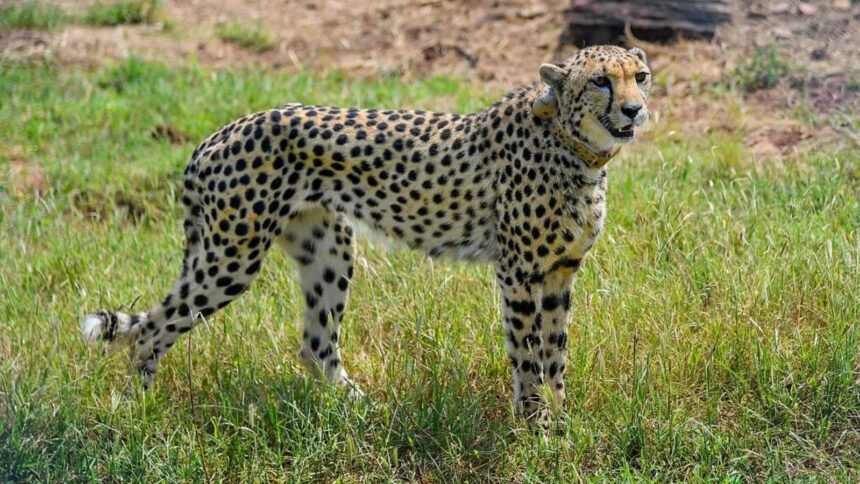Madhya Pradesh wildlife officials have devised a plan to populate the Gandhi Sagar wildlife sanctuary with a fresh stock of cheetahs by introducing a female cheetah after the monsoon.
In April, wildlife officials went ahead with the plan to introduce cheetahs to Gandhi Sagar – meant to be a second home for the animals in Madhya Pradesh after Kuno – by relocating six-year-old Prabhash and Pavak there. The two male cheetahs, originally brought from South Africa’s Waterberg Biosphere Reserve to Kuno in February 2023, were chosen due to their wild traits, hunting record and age.
Gandhi Sagar and Kuno are 250 km away.
Over the past few months, the two cheetahs have managed to “adapt to the conditions” and are successfully hunting down prey, officials said, adding that they have not exhibited any behaviour which would “cause concern”.
Wildlife officials first got rid of the competition in the form of leopards by transporting the co-predators out of the sanctuary limits. “We wanted the two male cheetahs to adapt and register an impressive kill score. They have managed to explore the wilderness, and wildlife officials have received training to deal with them. The second phase was to begin a mating programme,” said a senior wildlife officer.
The chairman of the Cheetah Project Steering Committee, Dr Rajesh Gopal, confirmed the development. “The plan has been finalised, a female cheetah will be translocated from Kuno to Gandhi Sagar to help populate the new site. The move is expected to take place soon after the monsoon, once the water begins to recede. One female has already been identified for the transfer,” Gopal told The Indian Express.
It is also learnt that an orphan cheetah, Mukhi, whose mother Jwala abandoned it, will not be released into the wild. Said a senior official, “It has been decided that the cheetah may never be released into the wild. But we have held discussions on whether it can be used in our breeding programmes in the future. Nothing final has been decided on it.”
The move to populate Gandhi Sagar comes against the backdrop of a deadlock with South Africa, Kenya and Botswana on discussions to get a fresh stock of cheetahs.
Story continues below this ad
Senior officials at Kuno have been preparing for the mating programme there for some time now. “There are 19 cubs in Kuno, and they have adapted really well to the summer and monsoon conditions. They have even begun swimming near small rivulets during the floods. Equipped with this experience, we plan on increasing the population of Gandhi Sagar with our own stock of cheetahs,” the officer said.
Kuno officials have become adept at recording day-to-day activities and kills made by suspected pregnant females through unobtrusive monitoring and improved veterinary care.
Officials will also monitor the female and male cheetahs before they are allowed to mate, learning from the disastrous experience in May 2023, when female cheetah Daksha died due to injuries sustained during a violent interaction with two male cheetahs during a mating attempt.
“We have made provision, such as providing round-the-clock staff and experienced veterinarians, to help with the next stage in populating Gandhi Sagar. The worry remains the prey base since that would be essential to ensure the cheetah population is able to sustain,” the officer said.
Story continues below this ad
As per Mandsaur Divisional Forest Officials, the cheetal density there stood at 7.38 per sq km, while nilgai were found at a density of 4.35 per sq km.
Spread across a vast 2,500 sq km landscape straddling Madhya Pradesh and Rajasthan, the Gandhi Sagar Wildlife Sanctuary’s mix of grasslands, dry deciduous forests, and riverine evergreen patches is meant to offer an ideal habitat for the cheetahs to thrive. The sanctuary currently has a carrying capacity of 10 cheetahs.







